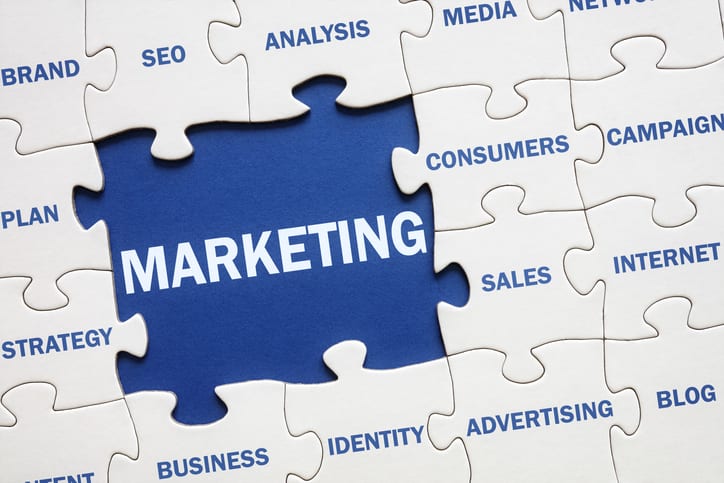
Inbound VS Outbound Marketing: What’s Better for You?
Your marketing strategy is not something that you should take lightly. After all, the success of your business, whether it’s big or small, is going to depend on your ability to generate customers. Without effective marketing, it’s going to be very difficult to grow your audience, not to mention your customer base. However, if you do just a little bit of research, you’ll quickly find that there are two main types of marketing: inbound marketing and outbound marketing. The question is, which should you use for your business?
Inbound VS Outbound Marketing
What Is Outbound Marketing?
Outbound marketing is the more traditional form of marketing. The main strategy of an outbound marketing campaign is to get your company’s message to an audience that consists of potential customers. For instance, running commercials on TV or radio, placing ads in magazines or newspapers, or putting up billboards outside. These are all forms of outbound marketing. The idea is that people who need your product or service are, hopefully, exposed to your ads and will come to you as a result.
Benefits Of Outbound Marketing
- Reach potential customers who were not aware of your brand
- Successful outbound marketing can boost short-term sales
Drawbacks Of Outbound Marketing
- Most outbound marketing tactics are expensive
- Targeting a broader audience will usually result in a lower ROI
- May reach potential customers who aren’t ready to buy
- Forcing message onto the audience, which can put them off
What Is Inbound Marketing?
Whereas outbound marketing involves forcing a message to an audience, inbound marketing focuses on putting your business in the position to be found by your audience on their own time. Most inbound marketing efforts are digital. For example, setting up a website and a social presence, writing content aimed at your target audience, and optimizing your content for SEO (search engine optimization). The idea is to make your brand easy for potential customers to find or stumble upon when searching for relevant information online. Once found, you can then nurture them through the sales funnel at their own convenience.
Read More: Why Your Website Redesign Would Benefit From An Inbound Marketing Strategy
Benefits Of Inbound Marketing
- Higher ROI. Your marketing efforts live forever (unlike outbound marketing), which means they can continue to see results in the future.
- You can reach more people. Billions of people use the Internet, giving you potential access to a much greater audience.
- Inbound marketing allows you to target specific buyer personas with greater ease, leading to better results.
- Inbound marketing is much more affordable.
Drawbacks Of Inbound Marketing
- You won’t see overnight results. Inbound marketing requires a lot of long-term effort.

What Type Of Marketing Should You Choose?
Inbound VS Outbound Marketing are different from each other but you should choose one as per your business requirement. Which type of marketing better suits your business is going to depend on various factors, such as what your budget is and what your goals are (are the more short-term or long-term?). However, as a smaller to mid-sized business, inbound marketing is going to be your best bet. It’s much more affordable and allows you to steadily grow your business over the long term. But that doesn’t mean that you should ignore outbound marketing. Outbound can still be incredibly effective, despite the fact that some mistakenly think that it has become obsolete with the advent of inbound.
Outbound marketing tactics can still be incredibly useful. There’s a reason why businesses still run large ad campaigns in magazines or on TV. There’s a reason why it’s so expensive to run a commercial in a 30-second slot during the Super Bowl. That reason is that outbound marketing still works. It’s a great way to increase brand exposure if you know what you’re doing.
Even if you don’t have a massive budget to work with, outbound marketing can still be effective, especially if used in conjunction with your inbound marketing strategy. After all, you can use outbound to market your online presence. For example, you can put your website or social media handles up at the end of your commercials, on your print ads, or on your billboards. You can even put QR codes on your print ads that people can scan with their smartphones.
The primary reason why advertising your inbound efforts on your outbound efforts is so effective is that most people are using a smartphone, tablet, or laptop while they are watching TV — or have one on hand when they pass by a billboard or are flipping through a magazine.
Build A Marketing Strategy Using Both Inbound And Outbound Strategies
There’s no reason to choose just one. Both inbound marketing and outbound marketing strategies have their pros and cons. Inbound tends to be a more long-term strategy, while outbound is more short-term. As such, using them together allows you to run a more comprehensive omni-channel marketing strategy. The more complete your marketing efforts are, the greater the odds of success will be.

Dan Gartlan helps companies of all kinds drive their business initiatives and achieve their goals with strategic marketing programs that deliver results. As President of Stevens & Tate Marketing, he has over 20 years experience across various industries, and continues to share his expertise to build brands nationwide.





